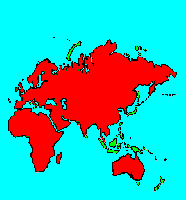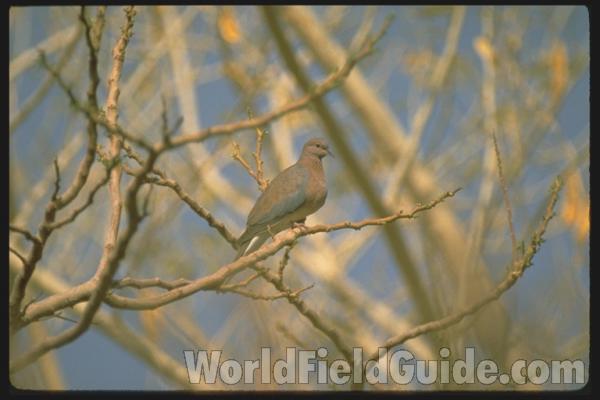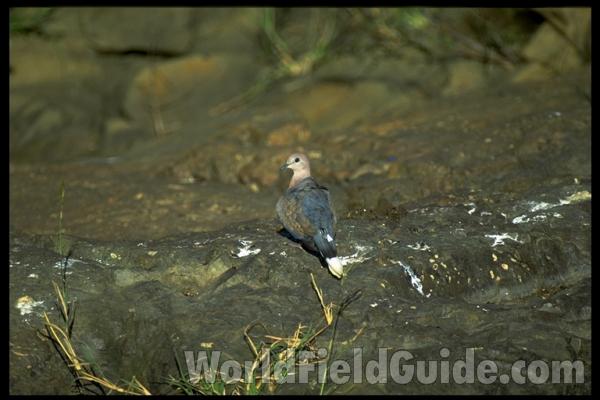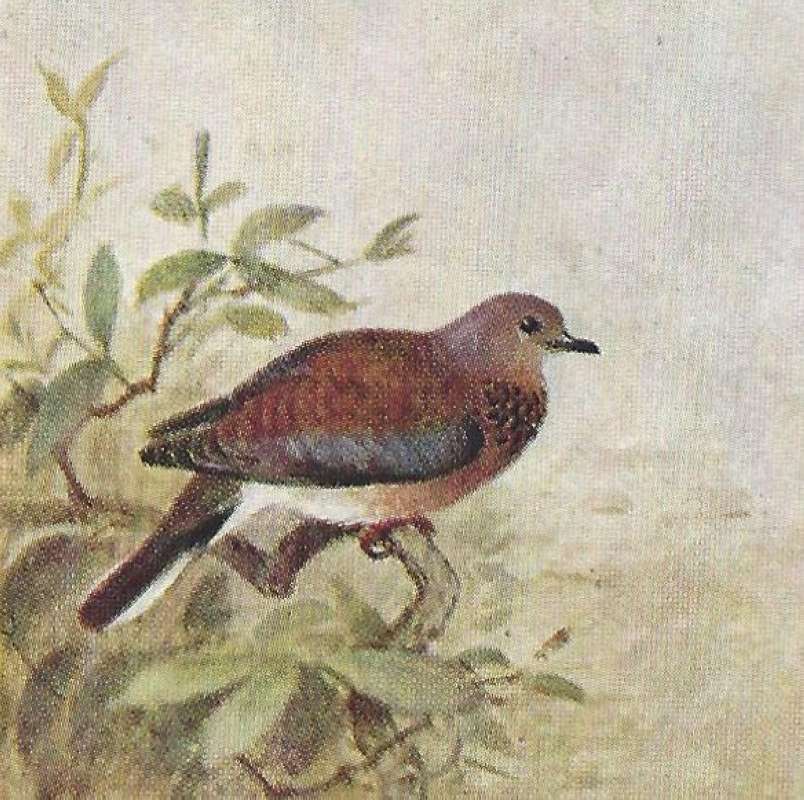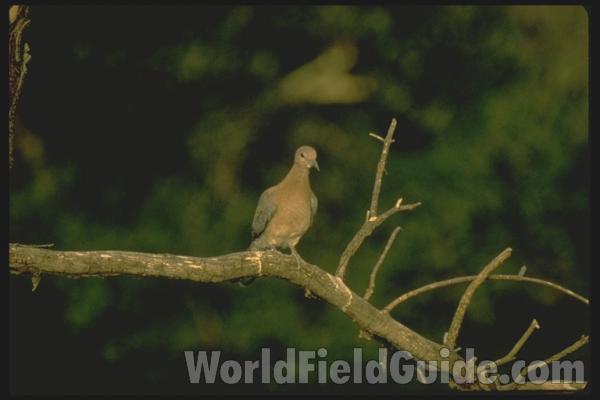SPECIES INFO
Laughing Dove (Stigmatopelia senegalensis to Streptopelia senegalensis) is found in India, the Middle East, and North Africa. It is also found in scattered locales in southeast Africa. The laughing turtle dove is also found locally in south western Australia. The nine and one half inch to eleven inch size, brown head, neck, and breast, and blue/gray back help identify this species. There is a darker spotted area on the upper breast.
The images in Goodwin show black outer tail feathers and a brown tail. The dorsal side is reddish brown. The leading edge of the dorsal wings are grey. The female has a pale head.
Howard and Moore show 6 subspecies for the laughing dove. The nominate subspecies, Streptopelia senegalensis senegalensis, is found from western Arabia to much of non-Sahara tropical Africa. The subspecies phoenicophila is found in a band across north western Africa from Morocco, Algeria, and Tunisia to northwestern Libya. The subspecies aegyptiaca is found in the Nile Valley of Egypt. The subspecies sokotrae is found on Socotra Island. The subspecies cambayensis is found from eastern Arabia to Iran, Pakistan, India, and Bangladesh. The subspecies ermanni is found more northerly in Kazakhstan, northern Afghanistan, and parts of China.The turtle doves (genus Streptopelia) are found over much of Africa and north into Europe. They are also found east into China and south into Indonesia. Some species have a black mark on the back of their neck. There are about 16 species in this genus.
With over three hundred species in the pigeon and dove family (Columbidae) found world wide, we have broken this family into two parts based on geographical origin with the Old World versus the New World as the criteria. This is the Old World portion.
Pigeon and Dove group (Family Columbidae) are a group of about 290 species of birds that are found worldwide.
Pigeons and Doves (Order Columbiformes) contains three families. The dodos (Family Raphidae) are extinct. The other families are the sandgrouse (Family Pteroclidae) and pigeons (Family Columbidae).
Clements in 2007 counted 308 pigeons and doves and Clements also counted 16 sandgrouse. (He, however, placed the sandgrouse in their separate order, Pterocliformes.)
Aves contains about 8,650 different species of living birds known to science. Each year about one new species is discovered in some remote rain forest or remote island. In addition, scientists have been raising many subspecies to full species status which may raise the species count to 10,000. Birdlife recognizes 10,027 species as of 2011.
However, each year about one species goes extinct. The rate of extinction is increasing, and the rate of new discovery is decreasing, so that the number of bird species will soon begin to decline rapidly. Although different taxonomists would organize the birds differently, there are approximately twenty-seven orders of birds. These orders are broken down into about one hundred and fifty-five different families.
Recent research of the genetic structure of some of the shore birds and owls would indicate that the present organization of orders and families should have some modification.
The birds are a worldwide group of animals that are characterized by having the front limbs modified into wings that are used for flying. Perhaps the most unique feature of the birds is the feathers. These feathers are made up of a central support called a quill and a series of small filaments that are hooked together as barbs.
For many years it was believed that Archaeopteryx discovered in Bavaria was the oldest bird from about 150 million years ago. However, in l986, Sankar Chattterjee, a Texas paleontologist, reportedly discovered a bird in the genus Protoavis that lived about 225 million years ago.
When this project was begun in 1978, we used Austin & Singer for bird taxonomy. Since then, we have adopted many changes, but have kept some older concepts that are still found widely in the literature. Recently, we have used Clements and Howard & Moore. Very recently, we have used Monroe and Sibley for the higher taxonomy of the perching birds.
Backboned Animals (Phylum Chordata) are the most advanced group of animals on earth. These animals are characterized by having a spinal cord or backbone. Most members have a clearly defined brain that controls the organism through a spinal cord. Fish, amphibians, reptiles, birds, and mammals are in this phylum.
Currently, some taxonomists believe that the fish should be divided into two groups (sharks and regular fishes) and that there are some other primitive groups in the phylum such as hagfish or lampreys.
Animal Kingdom contains numerous organisms that feed on other animals or plants. Included in the animal kingdom are the lower marine invertebrates such as sponges and corals, the jointed legged animals such as insects and spiders, and the backboned animals such as fish, amphibians, reptiles, birds, and mammals.
